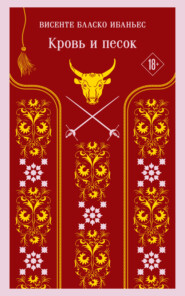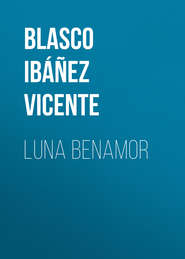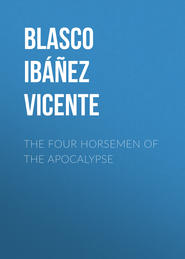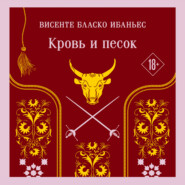По всем вопросам обращайтесь на: info@litportal.ru
(©) 2003-2024.
✖
The Shadow of the Cathedral
Настройки чтения
Размер шрифта
Высота строк
Поля
All the churches in Toledo remained in the hands of the Christian Muzarabés[13 - : Muzarabés—Christians living among the Moors and mixing with them; also an ancient form of service still continued in one chapel in Toledo and in one at Salamanca.] with the exception of the Cathedral, which was converted into the principal mosque.
The Catholic bishops were respected by the Moors, as were also the Hebrew rabbis; but the Church was poor, and the continual wars between the Saracens and the Christians, together with the reprisals which set a seal on the barbarities of the reconquest, made the continuance and life of worship extremely difficult.
Having arrived at this point Gabriel read the obscure names of Cixila, Elipando and Wistremiro. Saint Eulogio termed this last "the torch of the Holy Spirit, and the light of Spain"; but history is silent as to his deeds, and Saint Eulogio was martyred and killed by the Moors in Cordova on account of his excessive religious zeal. Benito, a Frenchman who succeeded to the chair, not to be behind his predecessors, made the Virgin send him down another chasuble to a church in his own country before he came to Toledo.
After these, came the interesting chronology of the warrior archbishops, warriors of coat-of-mail and two-edged sword, the conquerors who, leaving the choir to the meek and humble, mounted their war-horses and thought they were not serving God unless during the year they added sundry towns and pasture lands to the goods of the Church. They arrived in the eleventh century, with Alfonso VI., to the conquest of Toledo. The first were French monks from the famous Abbey of Cluny, sent by the Abbot Hugo to the convent of Sahagun, and they were the first to use the "don" as a sign of lordship. To the pious tolerance of the preceding bishops, accustomed to friendly intercourse with Arabs and Jews in the full liberty of the Muzarabé worship, succeeded the ferocious intolerance of the Christian conqueror. The Archbishop Don Bernardo was scarcely seated in the chair before he took advantage of the absence of Alfonso VI. to violate all his promises. The principal mosque had remained in the hands of the Moors by a solemn compact with the king, who, like all the monarchs of the reconquest, was tolerant in matters of religion. The archbishop, using his powerful influence over the mind of the queen, made her the accomplice of his plans, and one night, followed by clergy and workmen, he knocked down the doors of the mosque, cleansed it and purified it, and next morning when the Saracens came to pray towards the rising sun, they found it changed into a Catholic cathedral. The conquered, trusting in the word given by the conqueror, protested, scandalised, and that they did not rise was solely due to the influence of the Alfaqui Abu-Walid, who trusted that the king would fulfil his promises. In three days Alfonso VI. arrived in Toledo from the further end of Castille, ready to murder the archbishop and even his own wife for their share in this villainy that had compromised his word as a cavalier, but his fury was so great that even the Moors were moved, and the Alfaqui went out to meet him, begging him to condone the deed as it was accomplished, as the injured parties would agree to it, and in the name of the conquered he relieved him from keeping his word, because the possession of a building was not a sufficient reason for breaking the peace.
Gabriel admired as he read the prudence and moderation of the good Moor Abu-Walid; but with his enthusiasm as a seminarist he admired still more those proud, intolerant and warlike prelates, who trampled laws and people under foot for the greater glory of God.
The Archbishop Martin was Captain-General against the Moors in Andalusia, conquering towns, and he accompanied Alfonso VIII. to the battle of Alarcos. The famous prelate Don Rodrigo wrote the chronicle of Spain, filling it with miracles for the greater prosperity of the Church, and he practically made history, passing more time on his war-horse than on his throne in the choir. At the battle de las Navas he set so fine an example, throwing himself into the thick of the fight, that the king gave him twenty lordships as well as that of Talavera de la Reina. Afterwards, in the king's absence, he drove the Moors out of Quesada and Cazorla, taking possession of vast territories, which passed under his sway, with the name of the Adelantamiento.[14 - : Adelantamiento—Advancement.] Don Sancho, son of Don Jaime of Aragon, and brother to the Queen of Castille, thought more of his title of "Chief Leader" than of his mitre of Toledo, and on the advance of the Moors went out to meet them in the martial field. He fought wherever the fighting was fiercest, and was finally killed by the Moslems, who cut off his hands and placed his head on a spear.
Don Gil de Albornoz, the famous cardinal, went to Italy, flying from Don Pedro the Cruel, and, like a great captain, reconquered all the territory of the Popes, who had taken refuge in Avignon. Don Gutierre III. went with Don Juan II. to fight against the Moors. Don Alfonso de Acuna fought in the civil war during the reign of Enrique IV.; and as a fitting end to this series of political and conquering prelates, rich and powerful as true princes, there arose the Cardinal Mendoza, who fought at the battle of Toro, and at the conquest of Granada, afterwards governing that kingdom; and Jimenez de Cisneros, who, finding no Moors left in the Peninsula to fight, crossed the sea and went to Oran, waving his cross and turning it into a weapon of war.
The seminarist admired these men, magnified by the mists of ancient history and the praises of the Church. For him they were the greatest men in the world after the Popes, and, indeed, often far superior to them. He was astonished that the Spaniards of the present times were so blind that they did not entrust their direction and government to the archbishops of Toledo, who in former centuries had performed such heroic deeds. The glory and advancement of the country was so intimately connected with their history, their dynasty was quite as great as that of the kings, and on more than one occasion they had saved these latter by their counsels and energy.
After these eagles came the birds of prey; after the prelates with their iron morions and their coats-of-mail came the rich and luxurious prelates, who cared for no other combats but those of the law courts, and were in perpetual litigation with towns, guilds, and private individuals in order to retain the possessions and the vast fortune accumulated by their predecessors.
Those who were generous like Tavera built palaces, and encouraged artists like El Greco, Berruguete and others, creating a Renaissance in Toledo, an echo from Italy. Those who were miserly, like Quiroga, reduced the expenses of the pompous church, to turn themselves into money-lenders to the kings, giving millions of ducats to those Austrian monarchs on whose dominions the sun never set, but who, nevertheless, found themselves obliged to beg almost as soon as their galleons returned from their voyages to America.
The Cathedral was the work of these priestly ecclesiastics; each one had done something in it which revealed his character. The rougher and more warlike its framework, that mountain of stone and wood which formed its skeleton; those who were more cultivated, elevated to the See in times of greater refinement, contributed the minutely-worked iron railings, the doors of lace-like stonework, the pictures, and the jewels which made its sacristy a veritable treasure house. The gestation of the giantess had lasted for three centuries; it seemed like those enormous prehistoric animals who slept so long in their mother's womb before seeing the light.
When its walls and pilasters first rose above the soil Gothic art was in its first epoch, and during the two and a half centuries that its building lasted architecture made great strides. Gabriel could follow this slow transformation with his mind's eye as he studied the building, discovering the various signs of its evolution.
The magnificent church was like a giantess whose feet were shod with rough shoes, but whose head was covered with the loveliest plumes. The bases of the pillars were rough and devoid of ornament, the shafts of the columns rose with severe simplicity, crowned by plain capitals at the base of the arches, on which the Gothic thistle had not yet attained the exuberant branching of a later florid period; but the vaulting which was finished perhaps two centuries after the first beginning, and the windows with their multi-coloured ogives, displayed the magnificence of an art at its culminating point.
At the two extreme ends of the transepts Gabriel found the proof of the immense progress made during the two centuries in which the Cathedral had been rising from the ground. The Puerta del Reloj[15 - Reloj—Clock.], called also de la Feria[16 - Feria—Of the fair.], with its rude sculptures of archaic rigidity, and the tympanum, covered with small scenes from the creation, was a great contrast to the doorway at the opposite end of the crossway, that of Los Leones[17 - Los Leones—Lions.], or by its other name, de la Alegria[18 - Alegria—Joy.], built nearly two hundred years afterwards, elegant and majestic as the entrance to a palace, showing already the fleshly audacities of the Renaissance, endeavouring to thrust themselves into the severity of Christian architecture, a siren fastened to the door by her curling tail serving as an example.
The Cathedral, built entirely of a milky white stone from the quarries close to Toledo, rose in one single elevation from the base of the pillars to the vaulting, with no triforium to cut its arcades and to weaken and load the naves with superimposed arches. Gabriel saw in this a petrified symbol of prayer, rising direct to Heaven, without assistance or support. The smooth, soft stone was used throughout the building, harder stone being used for the vaultings, and on the exterior the buttresses and pinnacles, as well as the flying buttresses like small bridges between them, were of the hardest granite, which from age had taken a golden colour, and which protected and supported the airy delicacy of the interior. The two sorts of stone made a great contrast in the appearance of the Cathedral, dark and reddish outside, white and delicate inside.
The seminarist found examples of every sort of architecture that had flourished in the Peninsula. The primitive Gothic was found in the earliest doorways, the florid in those del Perdon and de los Leones, and the Arab architecture showed its graceful horseshoe arches in the triforium running round the whole abside of the choir, which was the work of Cisneros, who, though he burnt the Moslem books, introduced their style of architecture into the heart of the Christian temple. The plateresque style showed its fanciful grace in the door of the cloister, and even the chirruguesque showed at its best in the famous lanthorn of Tome, which broke the vaulting behind the high altar in order to give light to the abside.
In the evenings of the vacation Gabriel would leave the seminary, and wander about the Cathedral till the hour at which its doors were closed. He delighted in walking through the naves and behind the high altar, the darkest and most silent spot in the whole church. Here slept a great part of the history of Spain. Behind the locked gates of the chapel of the kings, guarded by the stone heralds on pedestals, lay the kings of Castille in their tombs, their effigies crowned, in golden armour, praying, with their swords by their sides. He would stop before the chapel of Santiago, admiring through the railings of its three pointed arches the legendary saint, dressed as a pilgrim, holding his sword on high, and tramping on Mahomedans with his war-horse. Great shells and red shields with a silver moon adorned the white walls, rising up to the vaulting, and this chapel his father, the gardener, regarded as his own peculiar property. It was that of the Lunas, and though some people laughed at the relationship, there lay his illustrious progenitors, Don Alvaro and his wife, on their monumental tombs. That of Doña Juana Pimental had at its four corners the figures of four kneeling friars in yellow marble, who watched over the noble lady extended on the upper part of the monument. That of the unhappy constable of Castille was surrounded by four knights of Santiago, wrapped in the mantle of their Order, seeming to keep guard over their grand master, who lay buried without his head in the stone sarcophagus, bordered with Gothic mouldings. Gabriel remembered what he had heard his father relate about the recumbent statue of Don Alvaro. In former times the statue had been of bronze, and when mass was said in the chapel, at the elevation of the Host, the statue, by means of secret springs, would rise and remain kneeling till the end of the ceremony. Some said that the Catholic queen caused the disappearance of this theatrical statue, believing that it disturbed the prayers of the faithful; others said that some soldiers, enemies of the constable, on a day of disturbance, had broken in pieces the jointed statue. On the exterior of the church the chapel of the Lunas raised its battlemented towers, forming an isolated fortress inside the Cathedral.
In spite of his family considering this chapel as their own, the seminarist felt himself more attracted by that of Saint Ildefonso close by, which contained the tomb of the Cardinal Albornoz. Of all the great past in the Cathedral, that which excited his greatest admiration was the romantic figure of this warlike prelate; lover of letters, Spanish by birth, and Italian by his conquests. He slept in a splendid marble tomb, shining and polished by age, and of a soft fawn colour; the invisible hand of time had treated the face of the recumbent effigy rather roughly, flattening the nose, and giving the warlike cardinal an expression of almost Mongolian ferocity. Four lions guarded the remains of the prelate. Everything in him was extraordinary and adventurous even to his death. His body was brought back from Italy to Spain with prayers and hymns, carried on the shoulders of the entire population, who went out to meet it in order to gain the indulgences granted by the Pope. This return journey to his own country after his death lasted several months, as the good cardinal only went by short journeys from church to church, preceded by a picture of Christ, which now adorns his chapel, and spreading among the multitude the sweet scent of his embalming.
For Don Gil de Albornoz nothing seemed impossible; he was the sword of the Apostle returned to earth in order to enforce faith. Flying from Don Pedro the Cruel, he had taken refuge in Avignon, where lived exiles even more illustrious than himself. There were the Popes driven out of Rome by a people who, in their mediaeval nightmare, tried to restore at the bidding of Rienzi the ancient republic of the Consuls. Don Gil was not a man to live long in the pleasant little Provençal court; like a good archbishop of Toledo, he wore the coat-of-mail underneath his tunic, and as there were no Moors to fight he wished to strike at heretics instead. He went to Italy as the champion of the Church; all the adventurers of Europe and the bandits of the country formed his army. He killed and burnt in the country, entered and sacked the towns, all in the name of the Sovereign Pontiff, so that before long the exile of Avignon was again able to return and occupy his throne in Rome. The Spanish cardinal after all these campaigns, which gave half Italy to the Papacy, was as rich as any king, and he founded the celebrated Spanish college in Bologna. The Pope, well aware of his robberies and rapacity, asked him to give some sort of accounts. The proud Don Gil presented him with a cart laden with keys and bolts.
"These," said he proudly, "belong to the towns and castles I have gained for the Papacy. These are my accounts."
The irresistible glamour that a powerful warrior throws over a man physically feeble was strongly felt by Gabriel, and it was augmented by the thought that so much bravery and haughtiness had been joined in a servant of the Church. Why could not men like this arise now, in these impious times, to give fresh strength to Catholicism?
In his strolls through the Cathedral Gabriel greatly admired the screen before the high altar, a wonderful work of Villalpando, with its foliage of old gold, and its black bars with silvery spots like tin. These spots made the beggars and guides in the church declare that all the screen was made of silver, but that the canons had had it painted black so that it might not be plundered by Napoleon's soldiers.
Behind it shone the majestic decorations of the high altar, splendid with soft old gilding, and a whole host of figures under carved canopies representing various scenes from the Passion. Behind the altar and the screen the gilding seemed to spring spontaneously from the white walls, marking with brilliant lights the divisions between the stalls. Beneath highly-decorated pointed arches were the tombs of the most ancient kings of Castille, and that of the Cardinal Mendoza.
Under the arches of the triforium an orchestra of Gothic angels with stiff dalmatics and folded wings sang lauds, playing lutes and flutes, and in the central parts of the pillars the statues of holy bishops were interspersed with those of historical and legendary personages.
On one side the good Alfaqui Abu-Walid, immortalised in a Christian church for his tolerant spirit, on the opposite side the mysterious leader of Las Navas who, after showing the Christians the way to victory, suddenly disappeared like a divine envoy—a statue of exceeding ugliness with a haggard face covered by a rough hood. At either end of the screen stood as evidences of the past opulence of the church two beautiful pulpits of rich marbles and chiselled bronze.
Gabriel cast a glance at the choir, admiring the beautiful stalls belonging to the canons, and he thought enthusiastically that perhaps some day he might succeed in gaining one to the great pride of his family. In his wanderings about the church he would often stop before the immense fresco of Saint Christopher, a picture as bad as it was huge—a figure occupying all one division of the wall from the pavement to the cornice, and which by its size seemed to be the only fitting inhabitant of the church. The cadets would come in the evenings to look at it; that colossus of pink flesh, bearing the child on its shoulders, advancing its angular legs carefully through the waters, leaning on a palm tree that looked like a broom, was for them by far the most noticeable thing in the church. The light-hearted young men delighted in measuring its ankles with their swords and afterwards calculating how many swords high the blessed giant could be. It was the readiest application that they could make of those mathematical calculations with which they were so much worried in the academy. The apprentice of the church was irritated at the impudence with which these dressed up popinjays, the apprentices of war, sauntered about the church.
Many mornings he would go to the Muzarabé Chapel, following attentively the ancient ritual,[19 - The Muzarabé ritual is still sung in Arabic both in Toledo and Salamanca.] intoned by the priests especially devoted to it. On the walls were represented in brilliant colours scenes from the conquest of Oran by the great Cisneros. As Gabriel listened to the monotonous singing of the Muzarabe priests he remembered the quarrels during the time of Alfonso VI. between the Roman liturgy and that of Toledo—the foreign worship and the national one. The believers, to end the eternal disputes, appealed to the "Judgment of God." The king named the Roman champion, and the Toledans confided the defence of their Gothic rite to the sword of Juan Ruiz, a nobleman from the borders of Pisuerga. The champion of the Gothic breviary remained triumphant in the fight, demonstrating its superiority with magnificent sword thrusts, but, in spite of the will of God having been manifested in this warlike way, the Roman rite by slow degrees became master of the situation, till at last the Muzarabé ritual was relegated to this small chapel as a curious relic of the past.
Sometimes in the evenings, when the services were ended and the Cathedral was locked up, Gabriel would go up to the abode of the bell-ringer, stopping on the gallery above the door del Perdon. Mariano, the bell-ringer's son, a youth of the same age as the seminarist, and attached to him by the respect and admiration his talents inspired, would act as guide in their excursions to the upper regions of the church; they would possess themselves of the key of the vaultings and explore that mysterious locality to which only a few workmen ascended from time to time.
The Cathedral was ugly and commonplace seen from above. In the very early days the stone vaultings had remained uncovered, with no other concealment beyond the light-looking carved balustrade, but the rain had begun to damage them, threatening their destruction, and so the Chapter had covered the Cathedral with a roof of brown tiles, which gave the Church the appearance of a huge warehouse or a great barn. The pinnacles of the buttresses seemed ashamed to appear above this ugly covering, the flying buttresses became lost and disappeared among the bare-looking buildings, built on to the Cathedral, and the little staircase turrets became hidden behind this clumsy mass of roofing.
The two youths climbing along the cornices, green and slippery from the rain, would mount to quite the upper parts of the building. Their feet would become entangled in the plants that a luxuriant nature allowed to grow amid the joints of the stones, flocks of birds would fly away at their approach; all the sculptures seemed to serve as resting-places for their nests, and every hollow in the stone where the rain-water collected was a miniature lake where the birds came to drink; sometimes a large black bird would settle on one of the pinnacles like an unexpected finial; it was a raven who settled there to plume his wings, and it would remain there sunning itself for hours; to the people who saw it from below it appeared about the size of a fly.
These vaultings caused Gabriel a strange impression; no one could guess the existence of such a place in the upper regions of the building. He would walk through the forest of worm-eaten posts which supported the roof, through narrow passages between the cupolas of the vaulting that arose from the flooring like white and dusty tumours; sometimes there would be a shaft through which he could see down into the Cathedral, the depth of which made him giddy. These shafts were like narrow well-mouths at the bottom of which could be seen people walking like ants on the tile flooring of the church. Through these shafts were lowered the ropes of the great chandeliers, and the golden chains that supported the figure of Christ above the railing of the high altar. Enormous capstans showed through the twilight their cogged and rusty wheels, their levers and ropes like forgotten instruments of torture. This was the hidden machinery belonging to the great religious festivals; by these artifices the magnificent canopy of the holy week was raised and fastened.
As the sun's rays shone in between the wooden posts the dust of ages that lay like a thick mantel on the roof of the vaulting would rise and dance in them for a few seconds, and the huge old spiders' webs would wave like fans in the wind, while the footsteps of the intruders would occasion wild and precipitous scrambles of rats from all the dark corners. In the furthest and darkest corners roosted those black birds who by night flew down into the church through the shafts in the vaulting, and the eyes of the owls glowed with phosphorescent brilliancy, while the bats flew sleepily about sweeping the faces of the lads with their wings.
The bell-ringer's son would examine the deposits dropped in the dust, and would enumerate all the different birds who took refuge in the summit of the mountains of stone: this belonged to the hooting owl, and that to the red owl, and this again to the raven, and he spoke with respect of a certain nest of eagles that his father had seen as a young man, fierce birds who had endeavoured to tear out his eyes, and who had so thoroughly frightened him that he had been obliged to borrow the gun belonging to the night watchers on each occasion that his duties took him to the roof.
Gabriel loved that strange world, harbouring above the Cathedral with its silence and its imposing solitude. It was a wilderness of wood, inhabited by strange creatures who lived unnoticed and forgotten under the roof-tree of the church. Truly the good God had a house for the faithful down below, and an immense garret above for the creatures of the air.
The savage solitude of the higher regions was a great contrast to the wealth of the chapel of the Ochava, full of relics in golden vessels and caskets of enamel and precious marbles, to the quantities of pearls and emeralds in the magnificent treasury, heaped up as though they had been peas, and to the elegant luxury of the wardrobe, full of rare and costly stuffs and vestments exquisitely embroidered with every colour of the rainbow.
Gabriel was just eighteen when he lost his father. The old gardener died quietly, happy in seeing all his family in the service of the Cathedral and the good old tradition of the Lunas continued without interruption. Thomas, the eldest son, remained in the garden, Esteban, after serving many years as acolyte and assistant to the sacristans, was Silenciario, and had been given the Wooden Staff and seven reals a day, the height of all his ambition; and as far as regarded the youngest, the good Señor Esteban had the firm conviction that he had begotten a Father of the Church, for whom a place in heaven was especially reserved at the right hand of God Omnipotent.
Gabriel had acquired in the seminary that ecclesiastic sternness that turns the priest into a warrior more intent on the interest of the Church than on the concerns of his family. For this reason he did not feel the death of his father very greatly; besides, much greater misfortunes soon occurred to preoccupy the young seminarist.
CHAPTER III
There was great excitement both in the Cathedral and in the seminary, everyone discussing from morning till night the news from Madrid, for these were the days of the September revolution. The traditional and healthy Spain, the Spain of the great historical tradition had fallen. The Cortes Constituyentes were a volcano, a breath from the infernal regions, to those gentlemen of the black cassock who crowded round the unfolded newspaper, and, if they found comfort and satisfaction in a speech of Maesterola's they would suffer the agonies of death at the revolutionary harangues, which dealt such terrible blows at the olden days. The clergy had turned their eyes towards Don Carlos, who was beginning the war in the northern provinces; the king of the Vascongados[20 - Provinces of Alava, Guipuscoa, and the lordship of Biscay.] mountains would be able to remedy everything when he came down into the plains of Castille. But years passed by, Amadeus had come and gone, they had even proclaimed a republic! And yet the cause of God did not seem to advance much, and Heaven seemed deaf. A republican deputy proclaimed a war against God, challenging Him to silence him; and so impiety stalked along immune and triumphant, and its eloquence flowed abroad like a poisonous spring.
Gabriel lived in a state of bellicose excitement—he forgot his books, he disregarded his future, he never thought now of singing his mass. What would happen to his career now that the Church was in peril, and that the sleepy poetry of past ages, that had enveloped him from his cradle like a perfumed cloud of old incense and dried roses, was on the point of vanishing?
Often some of the pupils disappeared from the seminary, and the professors would reply to the inquiries of the curious with a sly wink.
"They have gone out—with the good sort. They could not see quietly what was happening—'child's play,' 'follies.'"
But nevertheless such follies made them smile with paternal satisfaction.
He thought to be himself among those who fled, as the world seemed to be coming to an end. In certain towns the revolutionary mob had invaded and profaned the churches; as yet they had not murdered any of the ministers of God as in other revolutions, but still the priests were unable to go about the streets in their cassocks for fear of being hooted and insulted. The remembrance of the archbishops of Toledo, those brave ecclesiastical princes, implacable warriors against the infidels, fired his warlike feelings. As yet he had never been away from Toledo, away from the shadow of its Cathedral; Spain seemed to him as vast as all the rest of the world put together, and he began to feel the ardent desire of seeing something new, of seeing closer all the wonderful things he had read about in his books, stirring within him.
One day he kissed his mother's hand, without feeling any very great emotion towards the trembling and nearly blind old woman, for the seminary had for him more tender memories than the house of his fathers, smoked his last cigar with his brothers in the garden without revealing his intentions to them, and that night he fled from Toledo with a scapulary of the Heart of Jesus sewed into his waistcoat, and a beautiful silk scarf in his wallet, one of those worked by white hands in the convents of the city. The son of the bell-ringer went with him. They joined one of the insignificant bands who were devastating Murcia, but they soon went on to Valencia and Catalonia, anxious to perform greater exploits for the cause of God than merely stealing mules and extorting contributions from the rich.
Gabriel felt an intense delight in this wandering life, with its continual alarms owing to the proximity of the troops.
He had been made an officer at once, on account of his education, and because of the letters of recommendation that certain of the prebends of the Metropolitan Church had given him; letters lamenting greatly that a youth of so much theological promise should go and risk his life like a simple sacristan.
Luna enjoyed the free and lawless life of war with the zest of a collegian out of bounds; but he could not hide the feeling of painful disillusion that the sight of those armies of the Faith caused him. He had expected to find something akin to the ancient crusading expeditions: soldiers who fought for an ideal, who bent the knee before beginning the fight, so that God might be on their side, and who at night, after a hard-fought field, slept the pure sleep of an ascetic; instead of which he found an armed mob, mutinous to their leaders, incapable of that fanaticism which rushes blindfold to death, anxious only that the war might last as long as possible, so that they might continue the life of lawless wandering at the expense of the country, which they considered the best life possible; people who at the sight of wine, women or plunder would disband themselves, hungering, turning against their leaders.
It was the ancient life of the horde, surging up through civilisation, the atavic custom of stealing the stranger's bread and women by force of arms, the ancient Celtiberic love of factions and internal strife, that only caught hold of a political pretext in order to revive.
Gabriel, with very rare exceptions, found none in those badly-armed and worse-clothed bands who fought with a fixed idea; they were adventurers who wished for war for the sake of war; visionaries anxious for fortune; country lads from the fields, who in their passive ignorance had joined the factions, just as they would have stayed at home if they had had better counsels; simple souls who firmly believed that in the towns they were burning and destroying God's ministers, and who had thrown themselves into the fray so that society should not lapse into barbarism.















